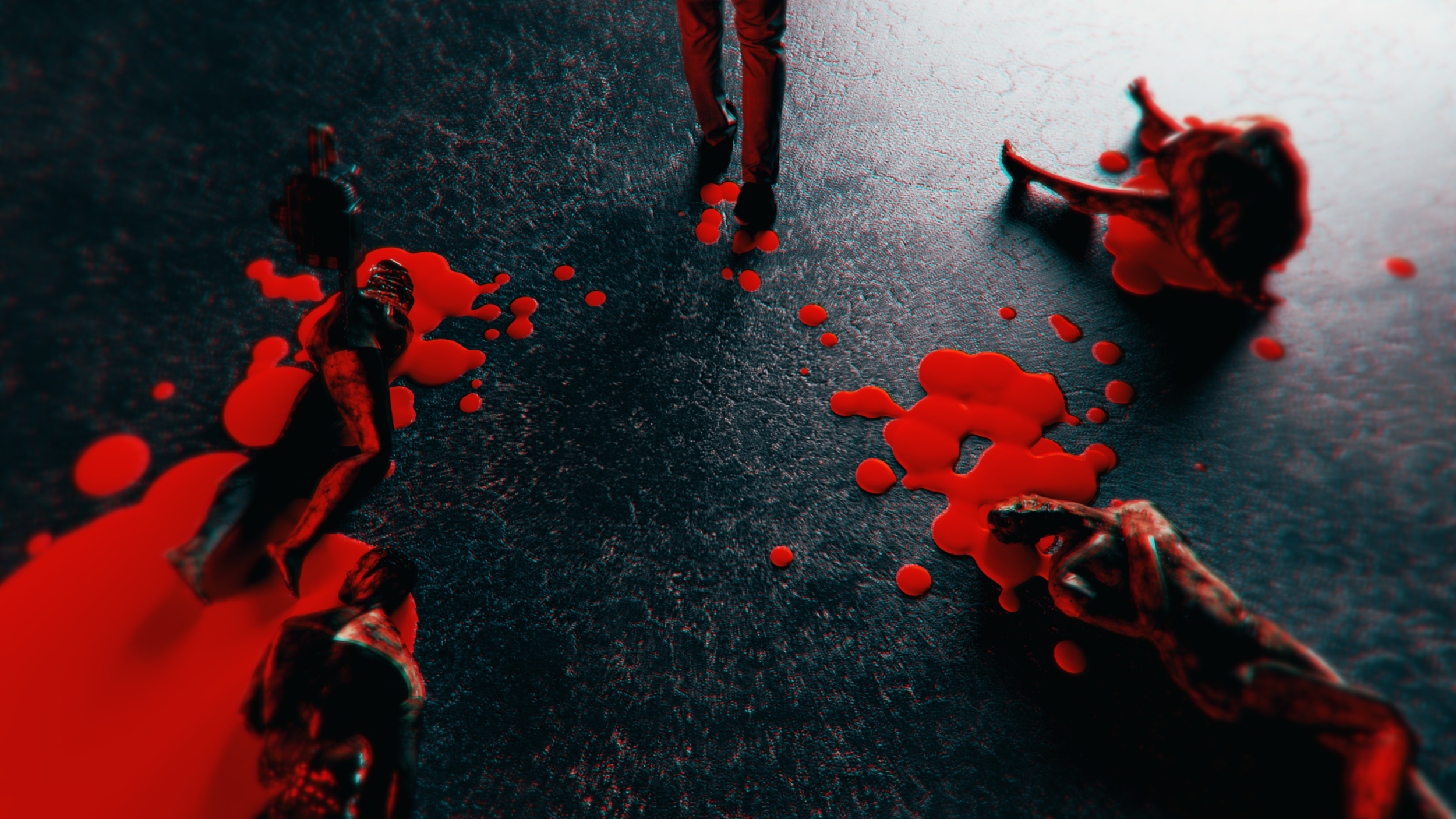
BRUTAL: CONFESSIONS OF A HOMICIDE INVESTIGATOR
CONCEPT
This project delves into the complex relationship between beauty and grotesque art through 3D-rendered world creation using 3D digital assets from the real world. It aims to pay tribute to this relationship and bridge the gap between creativity and technology. The story explores the disturbing routine of Hiroki Dan, who commits murders and seeks forgiveness through confession while withholding important details, driven by a sinister belief in sacrificing for "the greater good.”
STORY
This opening sequence is based on a manga series inspired by the original work of Kei Koga and Ryou Izawa.
The story follows a young detective named Hiroki Dan who leads two lives - one as a detective and the other as a vigilante serial killer seeking justice against those who have escaped punishment. Dan meticulously plans and executes acts of torture to ensure that the wrongdoers experience the same pain they caused. His ultimate goal is to atone for his twisted soul and reunite with his beloved. He draws inspiration from his favorite movie, "The Exorcist," which was released in 1973.
This story is a prequel spinoff of Kei's previous manga series, Trace: Recollections of a Forensic Researcher. He based his series mostly on real crime stories and explores moral debates, delving into the multiple layers of narratives on how unsolved cases and criminals could create heated dialogues and discussions. Kei's stories reveal the gruesome, ugly, and bittersweet truth about actual crimes and their cult following. This shows how seeing different parts of the story can change our opinion and perspective of who to support.
MOODBOARDS
INSPIRATIONS
STORYBOARDS
Original Work References
Collected all visual resources related to Koga Kei and Ryo Izawa’s current manga series and its sequel, "Trace: Recollections of a Forensic Researcher." The goal is to align the story and motives behind Hiroki Dan's murderous intent in his early and later years.
Visual Goal References
My aim is to convert 2D illustrations into 3D models or create a live-action story with additional VFX effects. The 3D style creates a more personal connection with the audience, allowing them to engage with the narrative more deeply as it reflects their own experience/appearance.
Lighting References
I drew great inspiration from Chiaroscuro lighting as it brings a mysterious tone to any composition. The gestalt aspect of chiaroscuro allows for a sense of mystery, encouraging the audience to infer their beliefs about what lies in the shadows or in the morality of humans.
Storyboard Sketches 1
The winning storyboard conveyed the cycle of Detective Dan's murderous intent, repentance, bloodshed, and lust for mementos.
Storyboard Sketches 2
Taking into account the conclusive ending of the motion sequence conveyed in the storyboard, this sequence mainly depicts Detective Dan destroying all evidence of his wrongdoing in his ceramic kiln.
Storyboard Sketches 3
Adding part of this storyboard to the main one depicted more of the destruction in Detective Dan’s wake as he sought his own justice. It was later revealed in the sequel how much his vigilante justice had impacts and domino-like effects.
PRODUCTION PROCESS
After finishing the storyboard, I started developing and transforming the original contents along with the inspirations into a fresh vision.
Scouting
"I posted a job listing on Backstage in order to find the best possible candidate. Besides that, I also take the initiative to invite people who may fit the criteria when I come across them. That's how I found my model, Justin Sun. He showed interest in my unusual modeling gig and was a good fit for the role.
Prepare and Style
Reached out to a nearby salon and collaborated with their professional stylist to help me achieve the desired appearance for the model. The stylist was able to skillfully translate the look of the manga/comic book character into reality and expertly handle and teach the model how to style his new look.
3D Scanning
Spent the entire day with the model, the prop room coordinator, and the 3D lab staff. We scanned the model in different poses while holding or using various props. Even though we did not have a costume changes, each scanning session still took approximately 2 to 5 minutes. We had a total of 36 scans.
Cleanup Assets
Spent most of my time simplifying the polygons, filling any holes in the scanned model, smoothing any rough meshes and edges resulting from 3D scanning, cleaning up UV mapping, and applying color correction and lighting effects to the 3D models and props using Cinema4D and ZBrush.
Rearranging
To create a realistic 3D model, I set up multiple stages in Cinema4D and composed the model into different scenes with various camera angles, room layouts, large props, and lighting. Once satisfied with the camera angles, I used the Redshift rendering engine to render each shot and achieve a photorealistic and natural-looking result.
Compositing
In the post-production , After Effects is used to refine each shot. Similar to how RAW footage is treated, multiple layers are added to each shot to adjust color, lighting, background, and other effects. This process is done to ensure that all shots work together to tell a cohesive and visually stunning story.











